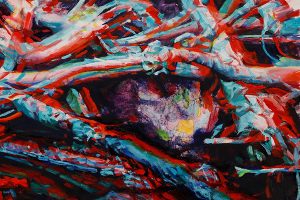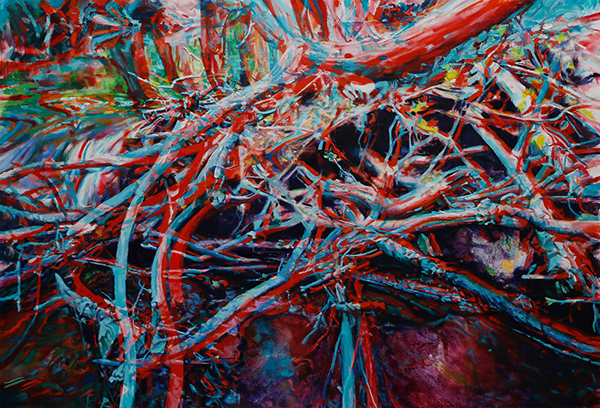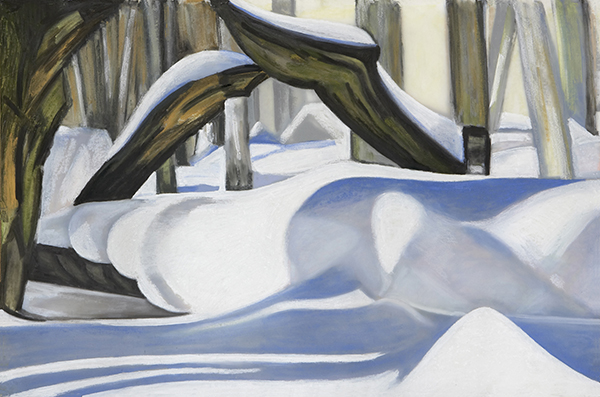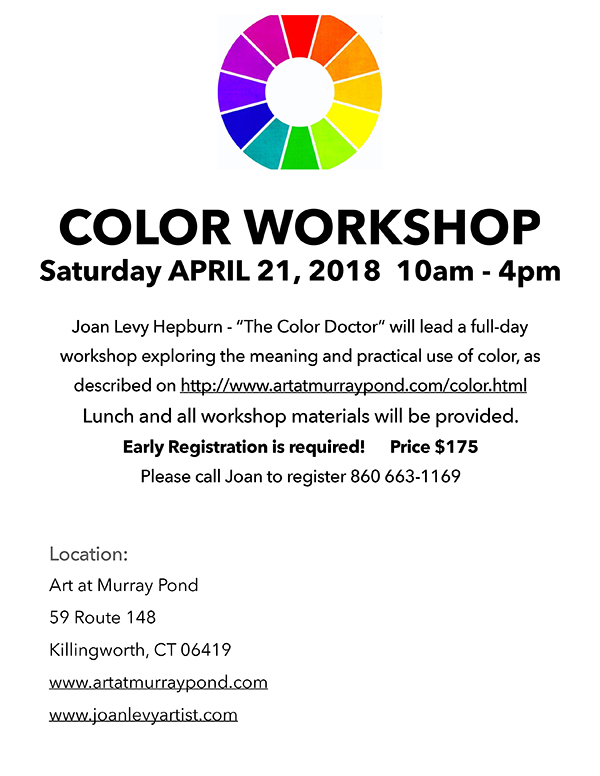
Tell us about the color separation company you founded
I’ve been a painter my whole life. Around the time I graduated from art school, no one was really helping painting students figure out what to do for a real job, you had to figure it out yourself.
As a kid growing up in the country, where I didn’t have easy access to viewing real art in museums, I had to rely on coffee table art books. When I would look at these books, I thought they looked terrible, and I couldn’t understand why people got so excited about the art in them. When I finally saw the artwork in museums, I thought, “Well that doesn’t look anything like the reproduction I have seen, why is that?”
By accident I ended up getting involved in the printing industry and saw how color separations were made. Coming to it from the point of view of a painter, I thought, “Well this is completely ridiculous, why are they doing it this way? Not only does it not make a good outcome, it doesn’t let the painting speak for itself.”
So when I was 26 I started a color separation company. I put together my knowledge of color and what I had learned from the study of painting, and came up with an approach that worked. I figured, if I was going to do a job, I wanted it to be as interesting as it was to paint. So I began specializing in doing publications for museums and galleries. I was doing work for the Metropolitan Museum of Art, Whitney Museum, Guggenheim, Chicago Art Institute, Getty Museum, National Gallery, and many others.
This new approach turned out to be better in many ways. This method was less expensive, and there were less steps involved. Remember this is back in the days of film and different types of proofing systems that were very costly. I started being referred to as the ‘Color Doctor’ because of my work in the field.

The Beaver Dam by Joan Levy Hepburn. Oil Paint on Yupo. 26 x 38 inches. 3/D Anaglyph to be viewed with red/cyan glasses.
Did one of your clients come up with the name ‘Color Doctor’?
The first person to coin that pseudonym was Rudi Stern, the owner of Let There Be Neon in NYC. I helped him create a book about neon, which is very difficult to photograph and capture the color. The color wants to fly out of the tube and become a glowing white halo. So I helped him keep the color in the tube to get a better reproduction of the colored lights for publication.
It’s a very small world in the printing industry. I went to do a job somewhere and someone said, “Oh I know who you are, you’re the Color Doctor.” I said, “What?” I was completely surprised anybody knew that.
How did new technologies impact your work in the color field?
When the company started, we had state of the art equipment – digital laser scanners and the Chromacom. This was a giant temperamental piece of machinery that had to be in a special temperature, humidity, and static controlled room. When Macintosh computers and Photoshop entered the market, this technology became obsolete.
I became a traveling color consultant for the printing industry. I identified color by assigning it numerical percentages of the subtractive colors CMYK. In this industry it is essential to know exact numbers for accurate reproduction of color. So I visited museums, museum warehouses, galleries, and collectors’ houses to look at art and to see how it was made. It was interesting to go to those places and see art that wasn’t in public view. It was also very inspiring to get new ideas about how to make paintings. I really enjoyed doing it because it wasn’t unrelated to my real work – painting.
Who was the most color reproductively challenging artist you dealt with?
Wayne Thiebaud. That’s because he is an amazing artist who really paints the physics of light. His paintings even confuse and trick a scanner or a camera. For example, a black is made of all colors, but they get buried under black. In order to turn it into a Thiebaud painting, the colors had to be excavated from the black. When I figured out how to do that, I could reproduce his paintings. He was very happy with them – he said he had never seen anybody do that before. He was very glad his paintings were being reproduced accurately.
How do you teach color?
Color is a physical perceptual experience and must be seen to be understood. So I start by creating light out of darkness using colored lights of red, green and blue. My method is to begin with a two-dimensional color wheel, then walk people through turning it into a three-dimensional sphere of color and a description of how to use it. I have a series of articles I wrote recently, intended to be read consecutively to help even a color novice, understand how it works. You can find these articles here: http://www.artatmurraypond.com/color.html.
You talk about unwanted colors or contaminants – can you explain what you mean by this?
Wanted colors are the two primary colors that mix to create a secondary hue. An unwanted color is the other primary, not contained in that mixture. For example yellow + blue = green, which is the secondary hue and the unwanted color being red – in the Munsell System.
A painting that is made of a palette of pure colors can have a jolting effect, but that affect only lasts for a moment. When our cone cells get saturated with color, they become blind to that color, causing an afterimage of the opposite color. Using unwanted color can help stimulate our appreciation of pure color. Contaminants are a tool for making pure colors more exciting.
How do you use Munsell color in your art?
In my art I combine the color system of the physics of light, and the Munsell System using pigments as a tool to create a new physical experience of light. The pigments in the chalk pastel called, “Ontario Snow Forms,” create a sense of light and temperature. You can feel the warmth of the sunlight reflecting off the cold snow. Where the blue shadows meet the white snow, there is a flicker of golden sunlight. Lately I have been making 3/D paintings. Red/Cyan glasses merge and neutralize the stereo vision into a 3/D illusion.

Ontario Snow Forms by Joan Levy Hepburn. 24 x 36 inches. Layered chalk pastel.
Talk about working with de Kooning. What was the best thing you learned from him?
I met de Kooning when I was 15 years old and he became my mentor. Before we met, I was trying to teach myself how to paint by studying art history linearly. He showed me how to think about painting in a non-linear timeline, which opened up all kinds of new possibilities. I do not make a division between representational and abstract painting – it is all painting. All successful representational paintings are good abstract paintings, and all non-objective paintings represent something. Art is a visual language. Naming objects interferes with seeing.
What is the most important thing about color to understand?
Human color vision is created by three color sensors in the cone cells – red, green and blue. Color management is simplified by the organization of three colors. The more you simplify the colors in the palette of the pigments in the Munsell System the more you will create a perceptual experience of real light. Rather than rendering the effects of light, you will use pigments of color to create a real physical sensation of color as light.
Anything else you would like to share with us?
On April 21st I will be teaching a full-day workshop on color, which includes lunch and all materials needed. In this workshop you will learn all you need to know about color and applying it to all applications. The workshop will cover the materials described in the series of color essays on my website www.artatmurraypond.com and more hands-on interaction. It is a fun way to experience color theory painlessly and in a way that you will remember!




Leave a Reply